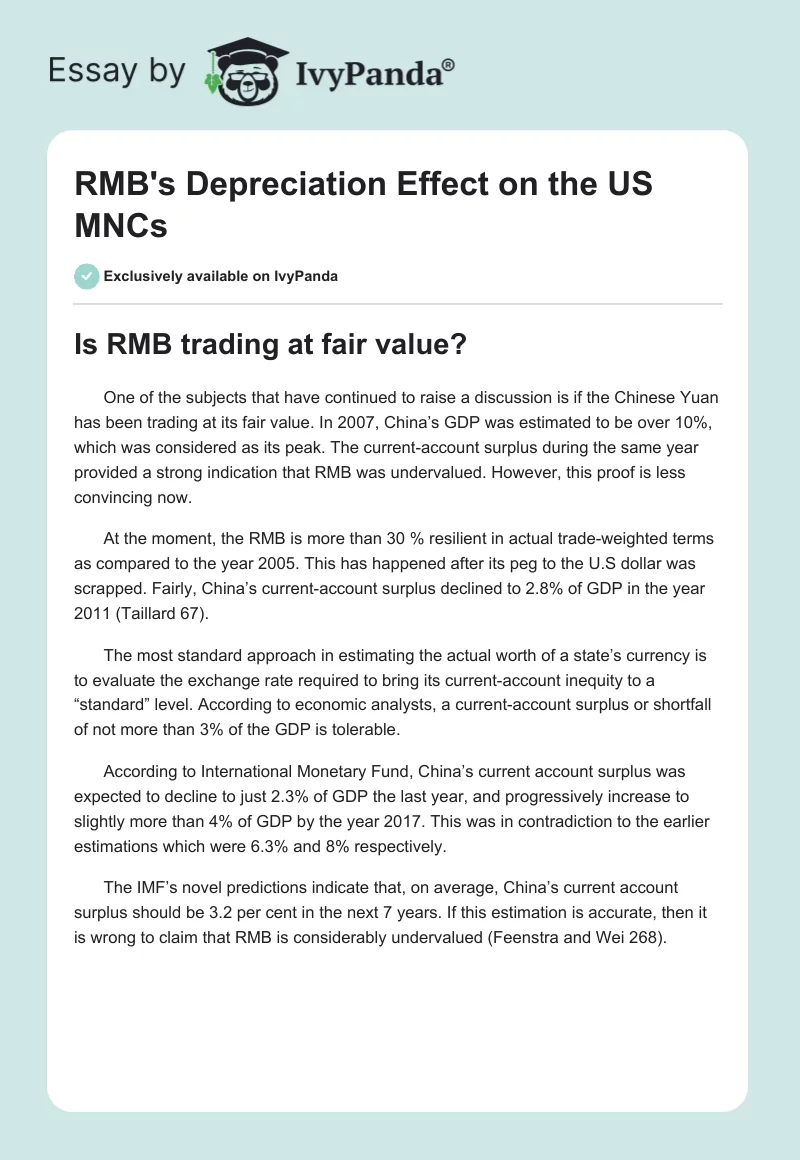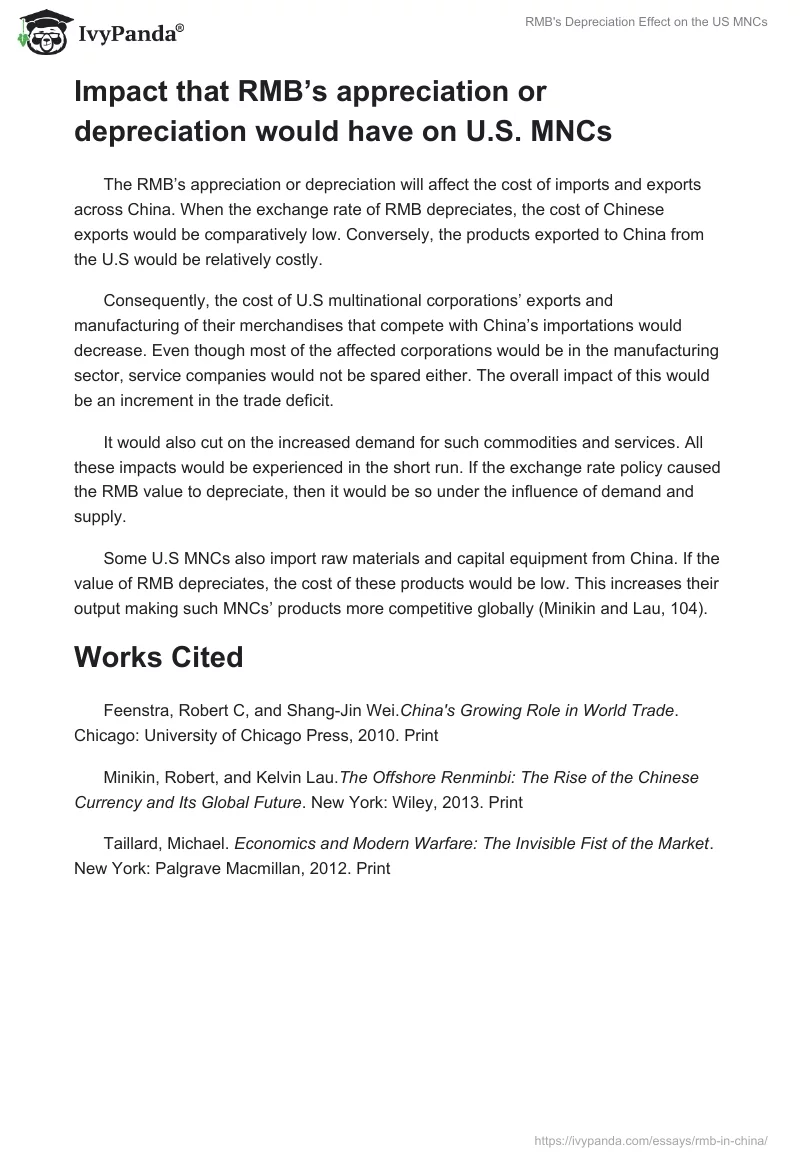Is RMB trading at fair value?
One of the subjects that have continued to raise a discussion is if the Chinese Yuan has been trading at its fair value. In 2007, China’s GDP was estimated to be over 10%, which was considered as its peak. The current-account surplus during the same year provided a strong indication that RMB was undervalued. However, this proof is less convincing now.
At the moment, the RMB is more than 30 % resilient in actual trade-weighted terms as compared to the year 2005. This has happened after its peg to the U.S dollar was scrapped. Fairly, China’s current-account surplus declined to 2.8% of GDP in the year 2011 (Taillard 67).
The most standard approach in estimating the actual worth of a state’s currency is to evaluate the exchange rate required to bring its current-account inequity to a “standard” level. According to economic analysts, a current-account surplus or shortfall of not more than 3% of the GDP is tolerable.
According to International Monetary Fund, China’s current account surplus was expected to decline to just 2.3% of GDP the last year, and progressively increase to slightly more than 4% of GDP by the year 2017. This was in contradiction to the earlier estimations which were 6.3% and 8% respectively.
The IMF’s novel predictions indicate that, on average, China’s current account surplus should be 3.2 per cent in the next 7 years. If this estimation is accurate, then it is wrong to claim that RMB is considerably undervalued (Feenstra and Wei 268).
Impact that RMB’s appreciation or depreciation would have on U.S. MNCs
The RMB’s appreciation or depreciation will affect the cost of imports and exports across China. When the exchange rate of RMB depreciates, the cost of Chinese exports would be comparatively low. Conversely, the products exported to China from the U.S would be relatively costly.
Consequently, the cost of U.S multinational corporations’ exports and manufacturing of their merchandises that compete with China’s importations would decrease. Even though most of the affected corporations would be in the manufacturing sector, service companies would not be spared either. The overall impact of this would be an increment in the trade deficit.
It would also cut on the increased demand for such commodities and services. All these impacts would be experienced in the short run. If the exchange rate policy caused the RMB value to depreciate, then it would be so under the influence of demand and supply.
Some U.S MNCs also import raw materials and capital equipment from China. If the value of RMB depreciates, the cost of these products would be low. This increases their output making such MNCs’ products more competitive globally (Minikin and Lau, 104).
Works Cited
Feenstra, Robert C, and Shang-Jin Wei.China’s Growing Role in World Trade. Chicago: University of Chicago Press, 2010. Print
Minikin, Robert, and Kelvin Lau.The Offshore Renminbi: The Rise of the Chinese Currency and Its Global Future. New York: Wiley, 2013. Print
Taillard, Michael. Economics and Modern Warfare: The Invisible Fist of the Market. New York: Palgrave Macmillan, 2012. Print


